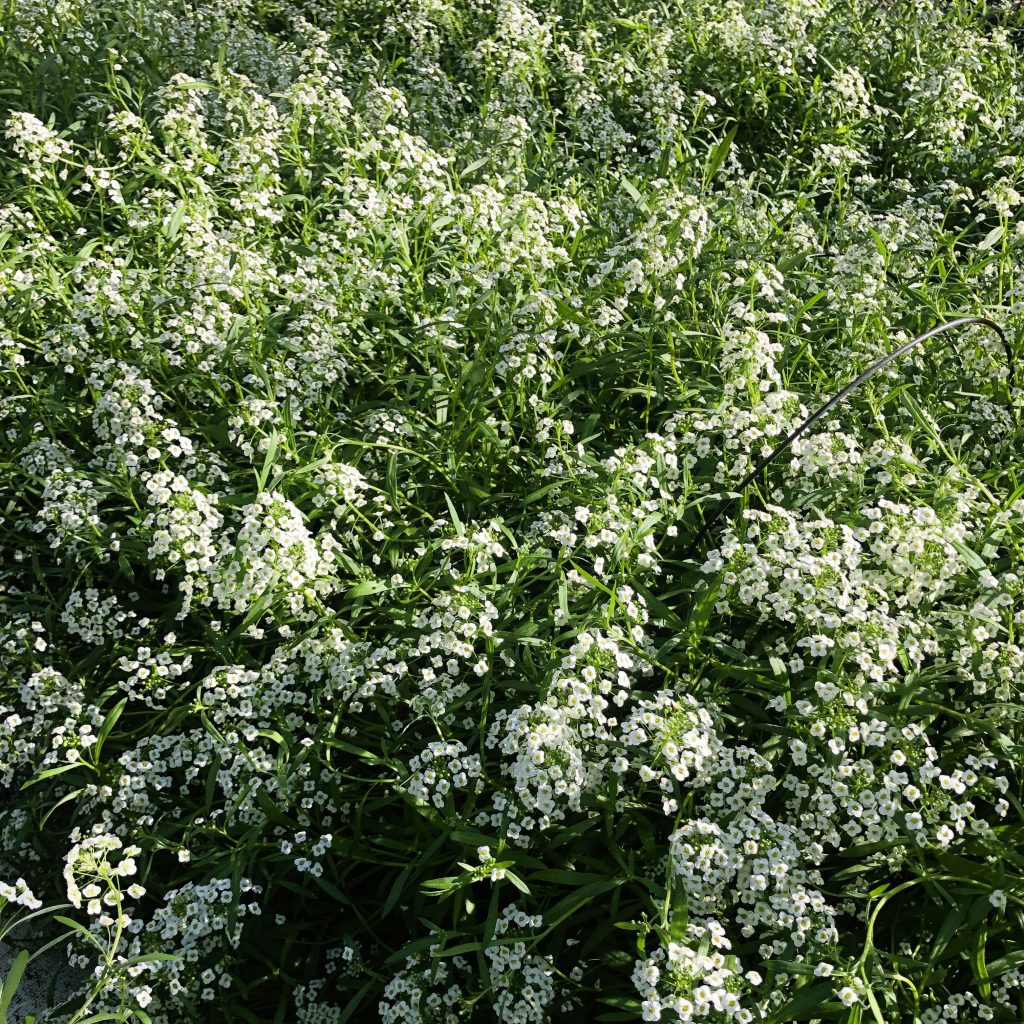
Harnessing the Power of Lobularia maritima: The Sweet Alyssum in Greenhouse and Field Agricultural Pest Management.
Introduction to Lobularia maritima (Sweet Alyssum)
Lobularia maritima, commonly known as sweet alyssum or sweet alison, is a charming and versatile flowering plant belonging to the family Brassicaceae. With its delicate clusters of tiny flowers and low- growing habit, sweet alyssum adds a touch of beauty to gardens and landscapes while offering a myriad of benefits beyond its ornamental value.
Sweet Alyssum as a Valuable Source of Nectar
In the realm of greenhouse pest management, sweet alyssum emerges as a hidden gem, serving as a vital component in integrated pest management (IPM) strategies. One of its most remarkable attributes is its role as a valuable source of nectar for beneficial insects and pollinators. Within a banker system program in a commercial greenhouse, sweet alyssum acts as a bustling “gas station” for a diverse array of insect allies. Especially in some crops, such as tomato, flowers of the crop do not produce nectar, and providing a nectar source improves mobility of parasitoid wasps, pollinators and other beneficial insects.
A Haven for Beneficial Insects and Pollinators
Encarsia formosa, Eretmocerus eremicus, Aphidius colemani, Aphidius ervi, Syrphid Flies, Bumble bees and other pollinators, and countless other beneficial insects flock to sweet alyssum, drawn by the abundance of nectar it offers. These insects play pivotal roles in controlling greenhouse pests, including aphids, whiteflies, thrips, and mites. By providing a consistent and accessible food source, sweet alyssum encourages the establishment and sustenance of beneficial insect populations within the greenhouse environment and field agriculture crops.
The Benefits of Sweet Alyssum in a Banker Plant System
- Enhanced Biological Control: Sweet alyssum acts as a beacon, attracting a diverse array of beneficial insects that contribute to biological pest control efforts. By supporting populations of natural enemies, such as parasitoids, predators, and pollinators, it helps suppress pest populations and maintain ecological balance within the greenhouse.
- Reduced Reliance on Chemical Pesticides: Incorporating sweet alyssum into a banker system program reduces the need for synthetic pesticides, promoting a more sustainable and environmentally friendly approach to pest management. This not only minimizes potential harm to beneficial insects but also reduces chemical residues on crops, enhancing food safety and
quality. - Promotion of Biodiversity: Sweet alyssum fosters biodiversity within crops grown in greenhouses and field agricultural crops, creating a rich and dynamic ecosystem that is resilient to pest outbreaks and other environmental stressors. Its presence enhances overall ecosystem health and stability, contributing to the long-term sustainability of greenhouse production systems.
Conclusion
Lobularia maritima, the sweet alyssum, emerges as a powerhouse in greenhouse and field agricultural crop pest management, offering a multifaceted solution that goes beyond mere aesthetics. As a valuable source of nectar for beneficial insects and pollinators, it serves as a cornerstone of biological control efforts, fostering a harmonious balance between predators, prey, and pollinators.
Embrace the power of sweet alyssum in your production and cultivate a thriving ecosystem where beneficial insects flourish and pests are kept in check. With sweet alyssum as your ally, you can embark on a journey towards sustainable pest management and greener, healthier crops.
